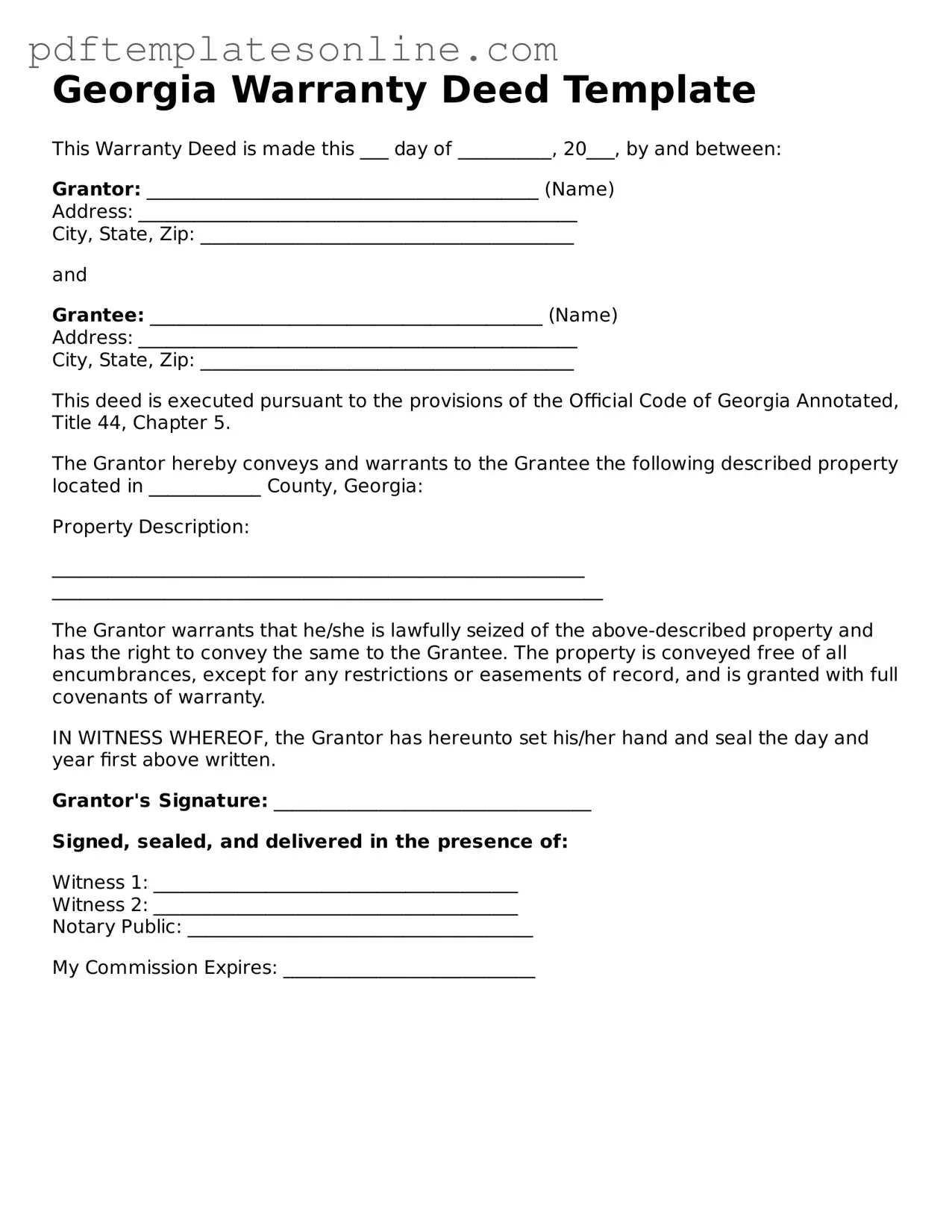Filling out a Georgia Deed form can seem straightforward, yet many individuals make common mistakes that can lead to complications down the line. One frequent error is failing to include the correct legal description of the property. This description should not only identify the property but also be precise enough to avoid any ambiguity. Without an accurate legal description, the deed may not be enforceable, leading to potential disputes over ownership.
Another mistake often encountered is neglecting to properly sign the deed. In Georgia, the signatures of both the grantor (the person transferring the property) and the grantee (the person receiving the property) are required. Additionally, if the grantor is a corporation or other entity, the deed must be signed by an authorized representative. Missing a signature can render the deed invalid, complicating the transfer process.
People also frequently overlook the necessity of having the deed notarized. A deed must be signed in the presence of a notary public to be legally binding. This step serves as a safeguard against fraud and ensures that the identities of the parties involved are verified. Without notarization, the deed may not hold up in court, which can create significant issues for both the buyer and the seller.
Incorrectly identifying the type of deed being used is another common pitfall. There are various types of deeds, such as warranty deeds and quitclaim deeds, each serving different purposes. Choosing the wrong type can lead to misunderstandings about the rights and responsibilities being transferred. For example, a warranty deed provides guarantees about the title, while a quitclaim deed does not. This distinction is crucial and should not be overlooked.
Finally, many individuals fail to consider the implications of tax assessments and recording fees associated with the deed. After filling out the deed form, it is essential to understand the local requirements for recording the deed with the county. Ignoring these fees can result in delays or even the inability to complete the property transfer. Being aware of all associated costs and procedures is vital for a smooth transaction.
